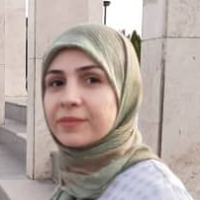The Meaning of Tehran Grand Bazaar in Feminine Experience
Author(s):
Article Type:
Research/Original Article (دارای رتبه معتبر)
Abstract:
The number of women in Tehran urban spaces has increased and the quality of their presence differs from the past. Tehran Bazaar attracts hundreds of thousands of people every day while a remarkable percentage of this population are women. The bazaar environment in recent years has encountered an increase in the number of women's presence. The research problem is that so far, women’s experience of Tehran Bazaar as an Iranian shopping space, has not been recognized. While women are using this space that has been gradually formed over the years for men who had been in the majority. The research purpose is to find out the meaning of the Bazaar and how the spatial qualities affect the formation of this meaning in the minds of Bazaar’s female users. Using a phenomenological approach, researchers have conducted in-depth interviews with 14 women (and to achieve complementary data, 6 men). The maps derived from the mental images of women and men show that the realm of presence of men in the bazaar is more extensive than the realm of presence of women. In the mentality of participating women, Tehran Bazaar finds its meaning in the form of five main themes as follows: shopping space, recreation space, layered space, gendered space, and intimate space. These meanings are affected by seven themes that describe the spatial qualities of the bazaar: a large complex of specialized “Raste Bazaars” (or Bazaar branches), being historical, being a labyrinth, being movement based, being old and traditional, liveliness and social diversity. The research findings show Tehran Bazaar is not only a place to shop, but presents some important benefits of urban space such as being among the people, enjoying the physical qualities and being linked with historical identity of the city. Researchers' interpretations also suggest that there is a disjuncture and inconsistency between the women experiences and the pre-existing male structures. This disjuncture results from the lack of conformity between the socio-cultural characteristics and the spatial qualities of the environment with the needs and desires of women in the "lived space". In spite of these inconsistencies, some factors act in favor of women presence in Tehran Bazaar. The meaning of the Bazaar as a "recreation space", which makes good feelings for most of its visitors, and the "intimate space" that is welcoming to people from every culture and class, suggests that, despite all the restrictions and shortcomings, women have been able to benefit from the Bazaar characteristics in favor of their own interests. Being a place for shopping, Tehran Bazaar has the potential to enable women to disguise themselves as buyers and at the same time enjoy the spatial and social qualities beyond a shopping environment. The results of this study point out that for any possible modification in the Bazaar, the meanings of this place in the experience of its users should be carefully recognized. Designs that do not care about these meanings can lead to the destruction of values of the Bazaar for its audience.
Keywords:
Language:
Persian
Published:
Hoviate shahr, Volume:14 Issue: 44, 2021
Pages:
99 to 112
https://magiran.com/p2215480
مقالات دیگری از این نویسنده (گان)
-
The Application of Ethnography in the Study of Space and Place: A Case Study of Women's Movement in the Tehran Bazaar
, Abbas Varij Kazemi
Journal of Design and Planning in Architecture and Urban Planning, -
Interaction between Gender and Space in Tehran Bazaar: The Case of Sabzeh Meydan and Moshir Khalvat
, Jahanshah Pakzad, Abbas Varij Kazemi
Soffeh,



